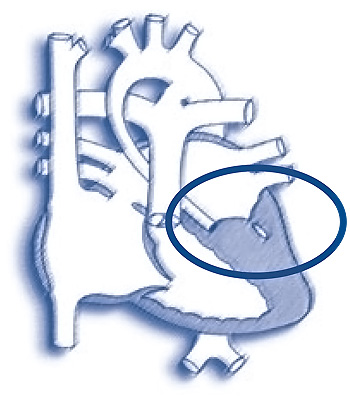| Congenital Heart Defects - Hypoplastic Left Heart Syndrome (HLHS) |
| with Patent ductus Arteriosus, Atrial Septal Defect |
|
Univentricular Physiology
Aetiology
The single ventricle disorders are responsible for approximately 1 - 4 % of congenital heart disease. The occurrence is dependent on the presenting defect.
Definition
There are a variety of heart defects in this category. The heart must have only one complete ventricle, encompassing an inlet, atrioventricular valve and outlet portion.
Thus mitral atresia, hypoplastic left heart syndrome, tricuspid atresia and extreme forms of double outlet right ventricle may be classified as a single ventricle. However the most common presentation of single ventricle is double inlet left ventricle (DILV).
What’s wrong?
- Non-functioning or extremely small Left Ventricle (LV)
- Circulation of the blood around or to body depends on PDA
- Must have PDA, otherwise no blood supply to whole body, only to lung and heart.

Corrective Procedures?
- Norwood stage I (Sano Shunt)
- Norwood stage II (Bi-directional cavopulmonary connect)
- Norwood stage III (Fontan procedure)
What are the possible complications after the procedures?
- Usually after the surgery - child may be quite ill
- Doctors should aim to balance pulmonary vascular resistance and systemic vascular resistance
- Chest is usually left opened for a few days after the surgery (2-3 days)
- Possible post operative complication:
- Low cardiac output - due to ventricular dysfunction
- Arrhythmias - heart rhythm problems
- Renal dysfunction
|